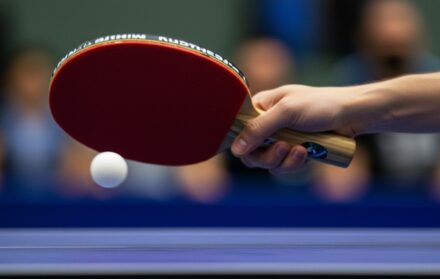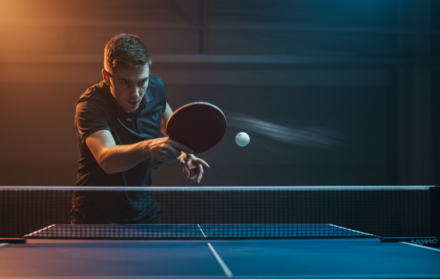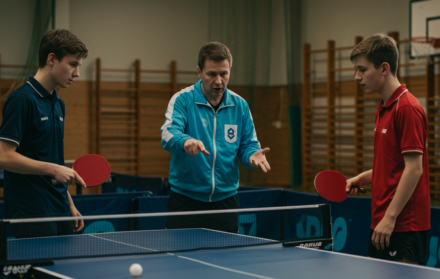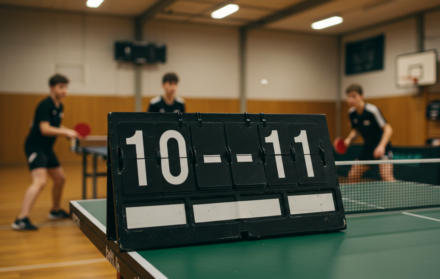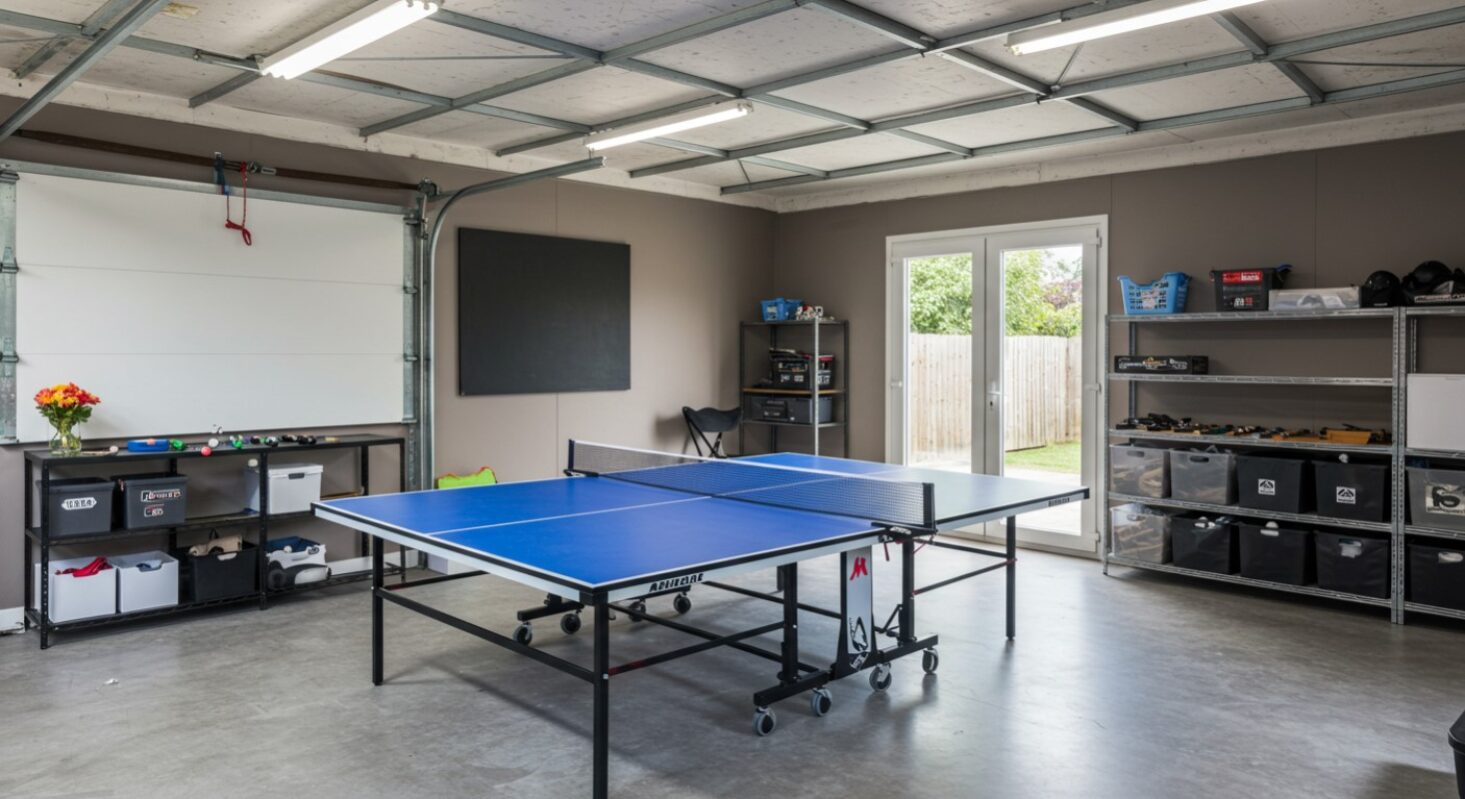
Planning the Perfect Ping Pong Table Space
A ping pong table is often the centrepiece of home entertainment, bringing family and friends together for fast-paced rallies and endless fun. Yet many people buy a table without considering where it will go or how the surrounding space will affect play. Planning the right setup matters just as much as the table itself.
Creating the ideal ping pong table space is not just about measurements. It is about transforming a room, garage, or even an outdoor area into a welcoming play zone that encourages both serious practice and light-hearted matches. With thoughtful design, you can turn even a small corner into a ping pong haven.
In this article, we will break down how much space you really need, explore different room options, and share clever design ideas. You will also find tips for small-space solutions, décor inspiration, and real-life layout examples. With the right plan, your ping pong setup can become the highlight of your home.
Start with the Numbers: How Much Room Do You Really Need?
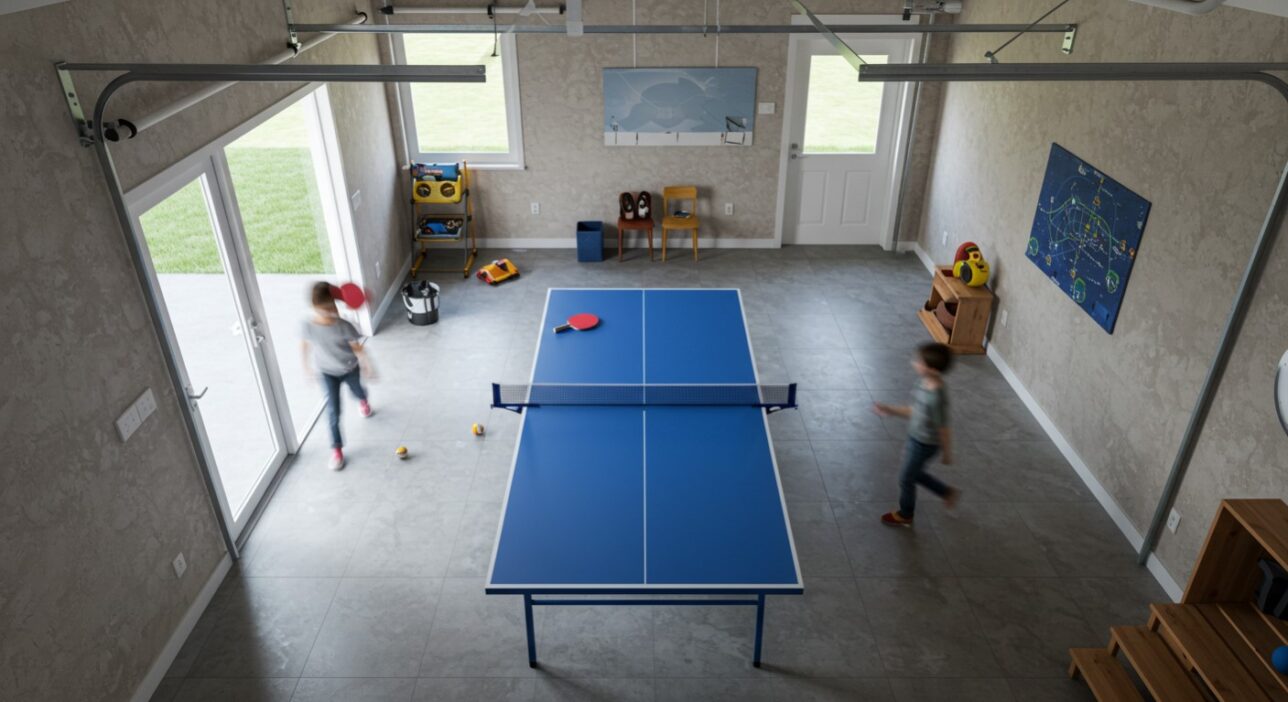
Before moving furniture or ordering a new table, it is essential to understand the actual space requirements.
Table Dimensions
A regulation-size ping pong table measures 2.74 metres long, 1.525 metres wide, and 76 centimetres high. This is the size used in competitive play and the most common option for home use. Even if you choose a compact table, using regulation dimensions as a reference helps you visualise what is needed.
Minimum vs Ideal Clearance
To play comfortably, you need more than just space for the table itself. Players must be able to move around freely, step back for returns, and swing without hitting walls or furniture.
-
Minimum clearance: At least 1.5 metres behind each end and 1 metre on each side. This allows for casual play but may feel tight for longer rallies.
-
Ideal clearance: Around 2.5 metres behind each end and 1.5 metres on each side. This mirrors club conditions and provides freedom for looping, lobbing, and defensive shots.
Adding these numbers to the table’s dimensions, the minimum recommended room size is about 5.7 metres by 3.5 metres, while the ideal room size is closer to 7.7 metres by 4.5 metres.
The Measuring Tape Test
Grab a tape measure and mark out these dimensions in your room, garage, or garden. Walk around the area with a table tennis paddle in hand, pretending to swing. This simple test immediately shows whether the space feels open or cramped. It also highlights obstacles, such as low ceilings, awkward corners, or furniture.
Measuring first ensures you buy the right table and prevents disappointment later.
Choosing the Right Spot in Your Home
Once you know the space required, the next step is deciding where at your home your table belongs.
Indoor Spaces
-
Basements: Ideal for year-round play, with consistent temperature and lighting. Ensure ceilings are high enough for lobs and ventilation is adequate.
-
Garages: A popular option that makes use of underused space. Concrete floors are fine, though you may want mats for comfort.
-
Lofts or Attics: If the ceiling height allows, these can become cosy game zones. Check the flooring strength before placing a heavy table.
-
Multipurpose Rooms: Spare bedrooms or living areas can host foldable or conversion-top tables that double as dining or work surfaces.
Outdoor Setups
Outdoor play is a great way to enjoy fresh air while competing. Patios, decks, and gardens all work if you have a weather-resistant table. Look for models made of aluminium or resin laminate that will not warp in rain or humidity. Remember to cover the table when not in use.
Noise and Disturbance
Table tennis can be noisy, with constant ball strikes and laughter. Consider whether neighbours or family members will be disturbed. Basements and garages reduce noise impact, while outdoor setups keep the fun away from quiet indoor areas.
Designing the Flow of the Room
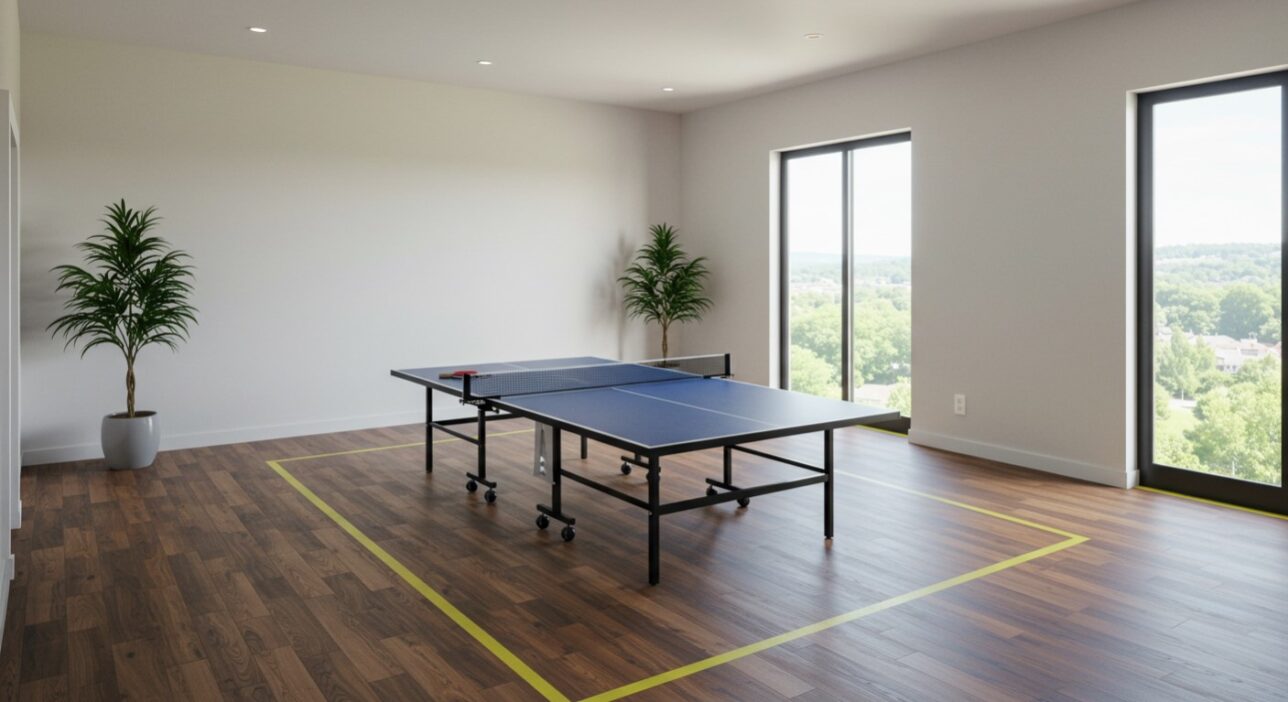
Once you have chosen a location, think about how the room will function as a whole.
Furniture Placement
Clear the space immediately around the table. Keep bulky furniture along walls, or remove it entirely if possible. Movable furniture such as chairs or small tables can be tucked away during play and returned afterward.
Lighting
Good lighting is essential for visibility and fair play. Overhead lighting works best, ideally with even distribution across the table. Avoid strong spotlights or lamps that cast shadows. Natural light is welcome, but position the table so that direct sunlight does not create glare.
Flooring and Wall Colours
Hard floors such as wood or laminate provide a stable surface for footwork. Rugs or mats should be avoided, as they may cause slipping. If you want to enhance the play zone, paint walls in light, neutral colours to reduce visual distraction. Bright posters or themed décor can add energy without affecting concentration.
By managing layout, lighting, and colour, you create a room that feels both practical and inviting.
Small-Space Ingenuity
Not everyone has a spare room the size of a sports hall. Fortunately, there are creative ways to make ping pong work in smaller homes.
Folding and Rollaway Tables
Modern folding tables allow you to collapse one or both halves for easy storage. Rollaway models have wheels, so you can tuck them into a corner or garage when not in use. These are perfect for families who share multipurpose rooms.
Mid-Size or Mini Tables
If full regulation size is unrealistic, mid-size or mini tables still offer plenty of fun. They are smaller but allow for quick games and skill practice. Children in particular benefit from these tables, as they are easier to handle.
Conversion Tops
Conversion tops transform dining tables, pool tables, or even sturdy desks into ping pong surfaces. They are compact, cost-effective, and ideal for flats or apartments. Simply set up the top when you want to play, then store it away after.
With the right choice, even tight spaces can become lively ping pong areas.
Making the Space Inviting
A ping pong room is not just about function. Adding personal touches makes it a space where people want to gather and play.
Storage Solutions
Install wall-mounted racks for paddles and balls, or use small cabinets to keep equipment organised. Some tables include built-in storage for convenience. A ball collection net or bucket also makes practice sessions smoother.
Adding Personality
Decorate the space with posters of famous players, team pennants, or colourful wall art. Lighting strips or themed paint can create a fun atmosphere. Adding a music system brings energy to matches and training sessions.
Creating a Social Vibe
Consider adding chairs or a sofa for spectators. A scoreboard on the wall encourages friendly competition. If space allows, combine the ping pong area with other games or social features, such as darts or a drinks corner.
These touches make the space welcoming and fun for both players and guests.
Real-Life Layout Ideas

To help inspire your setup, here are a few practical layout examples.
Garage-Turned-Games Room
An underused garage can be transformed into a ping pong paradise. Place the table in the centre, add bright overhead lights, and use the walls for paddle storage. Concrete floors can be softened with mats in the seating area.
Backyard Setup
An outdoor space can host a weather-resistant table with a simple patio cover for protection. String lights and garden chairs add ambience, while a cover keeps the table safe when not in use. This layout is perfect for summer evenings with friends.
Apartment Hack
In a small flat, a conversion top is the best solution. Place it over a dining table for matches, then store it behind a sofa or under a bed afterward. Compact paddle and ball storage completes the setup without overwhelming the room.
These real-life layouts prove that with creativity, any home can host a ping pong table.
Avoiding the Classic Pitfalls
While enthusiasm is great, planning mistakes can undermine your setup.
-
Buying before measuring: Always check dimensions before purchasing.
-
Ignoring lighting: Poor light or glare can make play frustrating.
-
Overcrowding the room: Too much furniture reduces clearance and safety.
Avoiding these errors saves money and ensures smoother play.
Conclusion: Planning the Perfect Ping Pong Table Space

Designing the perfect ping pong table space is about more than placing a table in a room. It requires careful measurement, smart furniture layout, and personal touches that make the space inviting.
By measuring clearance, choosing the right spot, and adding small design features, you can turn any room, garage, or garden into a lively table tennis zone. Whether you go for a regulation setup or a compact solution, the perfect space is the one you enjoy using.
With planning and creativity, your ping pong table can transform an empty corner into the heart of your home.
